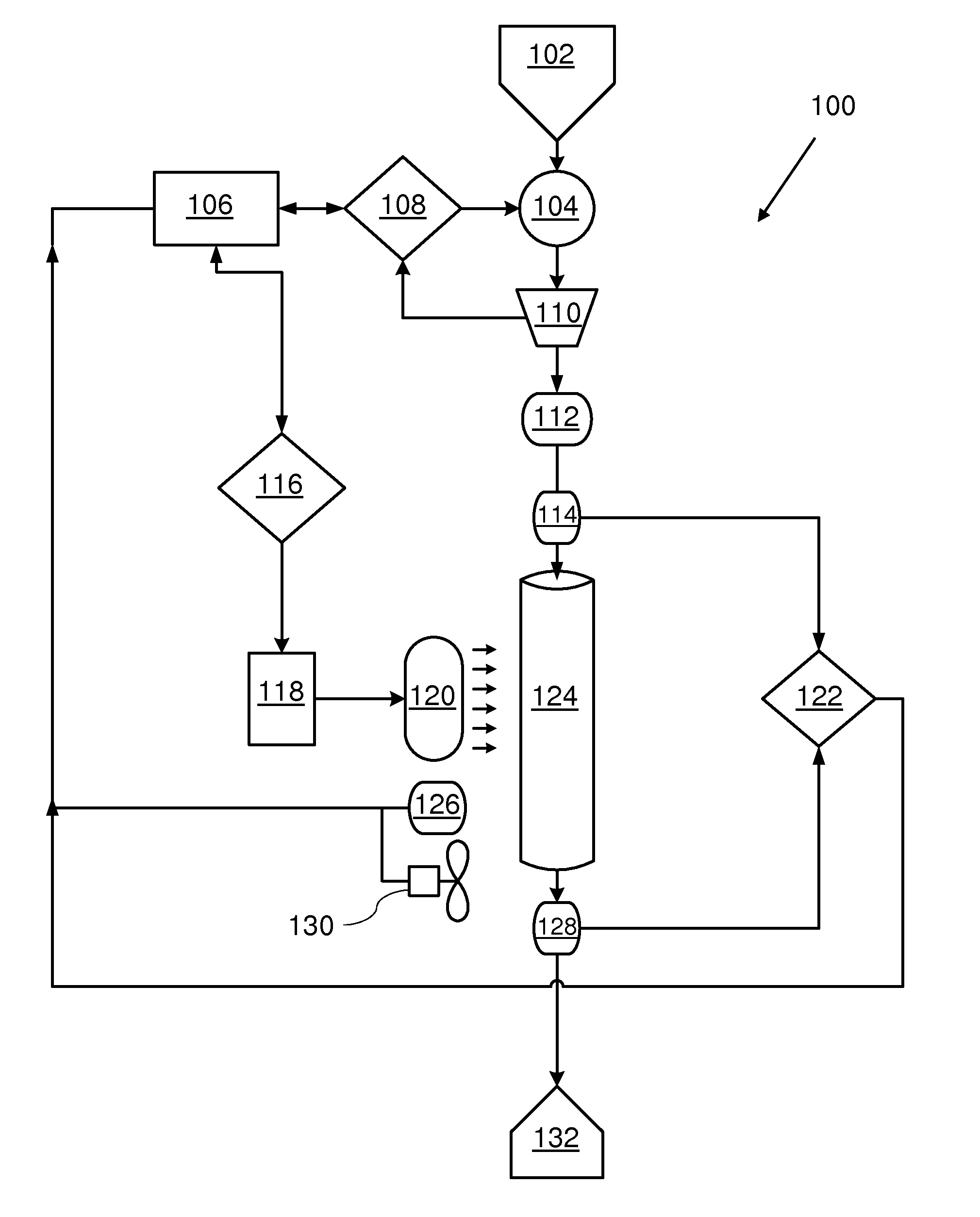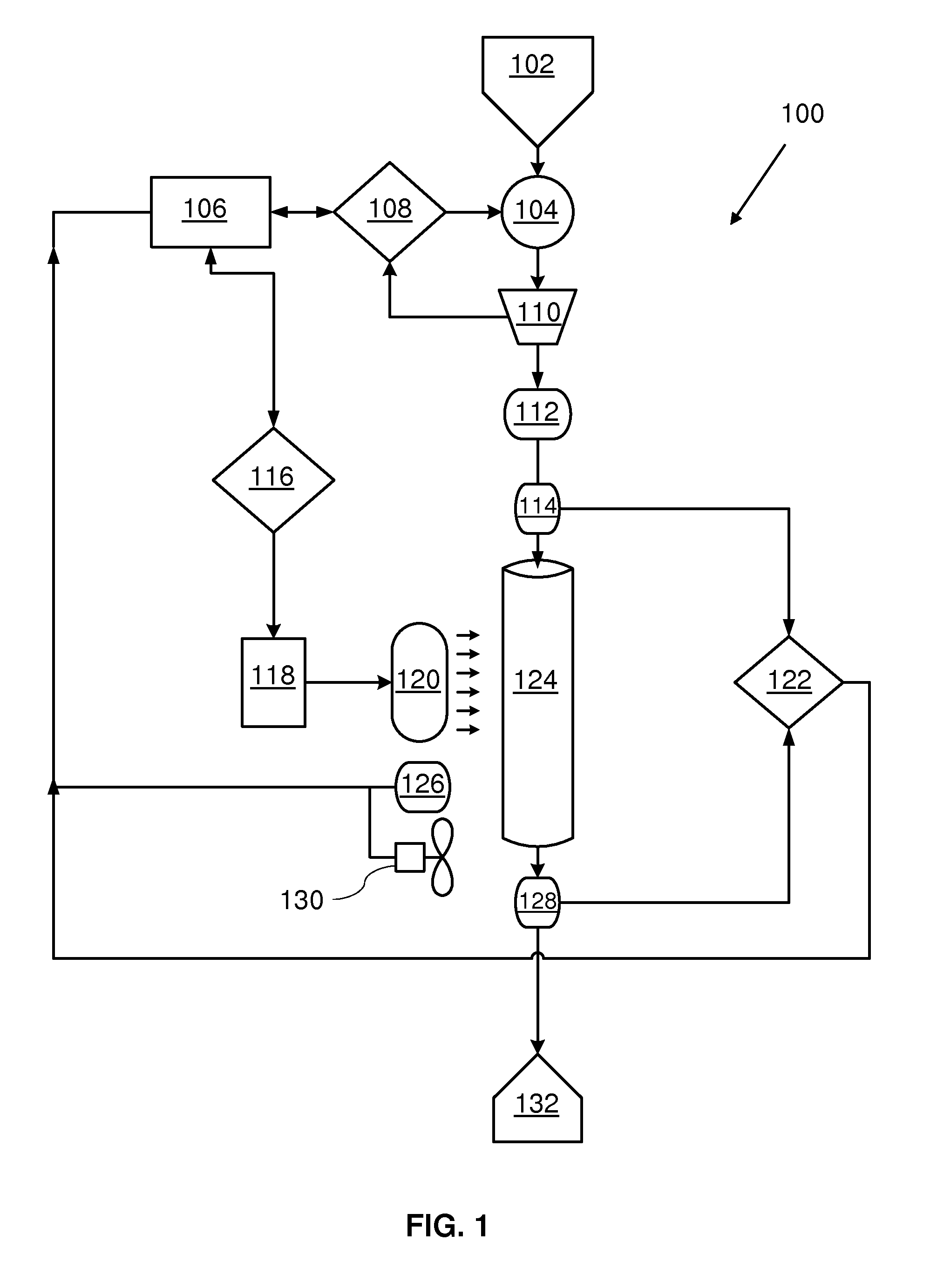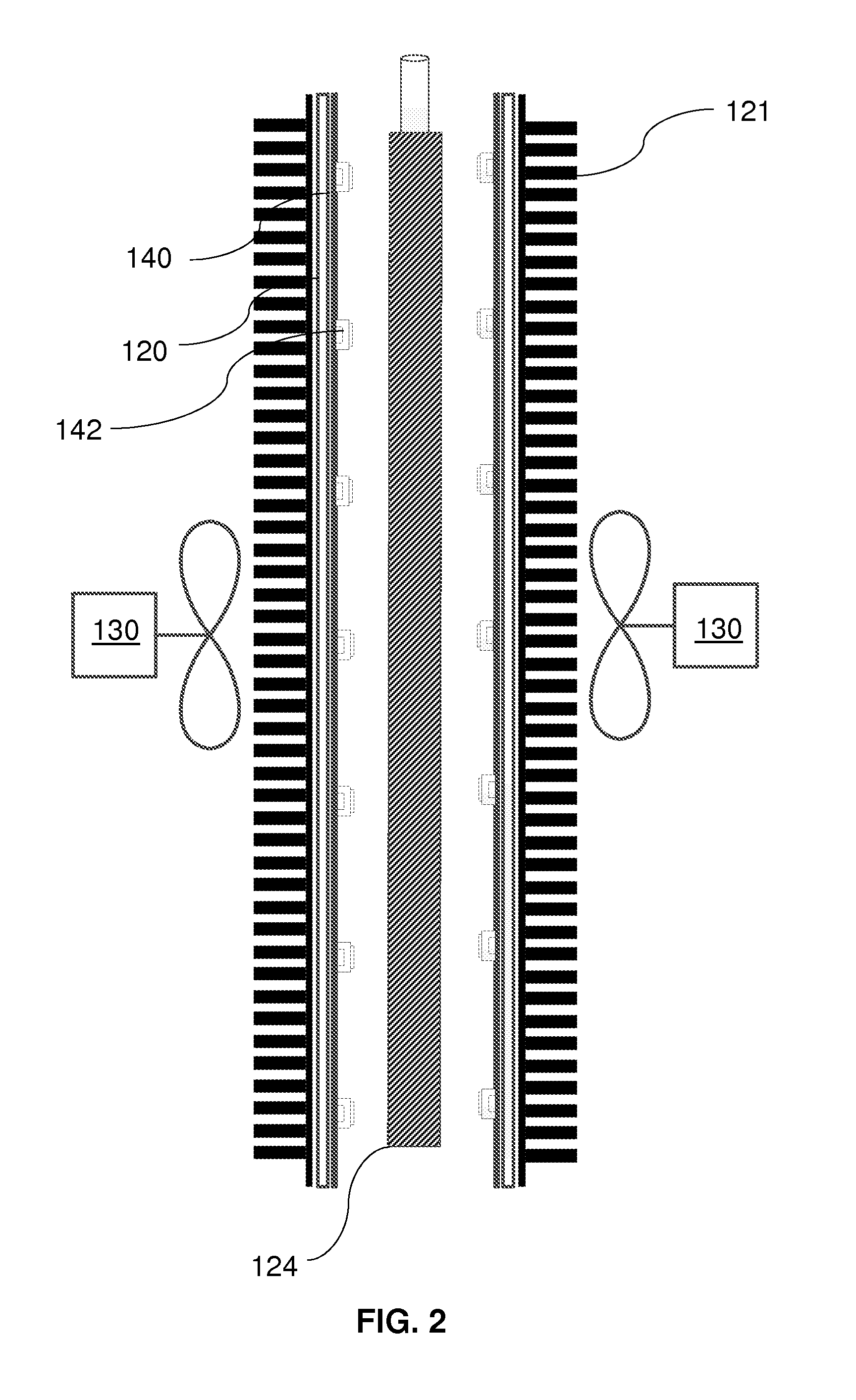Systems and methods for reduction of pathogens in a biological fluid using variable fluid flow and ultraviolet light irradiation
a biological fluid and variable fluid technology, applied in the direction of material analysis using wave/particle radiation, other blood circulation devices, instruments, etc., can solve the problems of pathogen transmission with the transfusion of cellular components of blood, the failure of all attempts to use uv irradiation for sterilizing whole blood or red cells, and the limited penetration of uv
- Summary
- Abstract
- Description
- Claims
- Application Information
AI Technical Summary
Benefits of technology
Problems solved by technology
Method used
Image
Examples
example
[0060]An experiment was conducted to demonstrate the ability of a device constructed as described above to inactivate a model virus in blood. In this experiment, whole blood was spiked with bacteriophage φ6, which is similar in structure to HIV (the genome is RNA of about 7000 nucleotides and is lipid-enveloped). The final titer of virus in the blood was about 10 logs. The blood was pumped through the device at various flow rates and samples were withdrawn at each flow rate. The blood samples were diluted 10-fold with saline and centrifuged at 3,000 rpm. The supernatant was then assayed for virus titer after 10-fold serial dilutions, on a lawn of the host bacterium (Pseudomonas syringae), by scoring the number of plaques formed on the Petri dishes. The extent of virus inactivation (log10) was calculated by comparing virus titer in treated blood with that of the control, untreated blood.
[0061]UVC power density during operation of the device was 2.2 mW / cm2. The UVC light dose to which...
PUM
 Login to View More
Login to View More Abstract
Description
Claims
Application Information
 Login to View More
Login to View More - R&D
- Intellectual Property
- Life Sciences
- Materials
- Tech Scout
- Unparalleled Data Quality
- Higher Quality Content
- 60% Fewer Hallucinations
Browse by: Latest US Patents, China's latest patents, Technical Efficacy Thesaurus, Application Domain, Technology Topic, Popular Technical Reports.
© 2025 PatSnap. All rights reserved.Legal|Privacy policy|Modern Slavery Act Transparency Statement|Sitemap|About US| Contact US: help@patsnap.com



